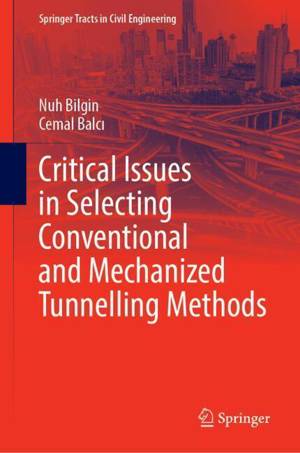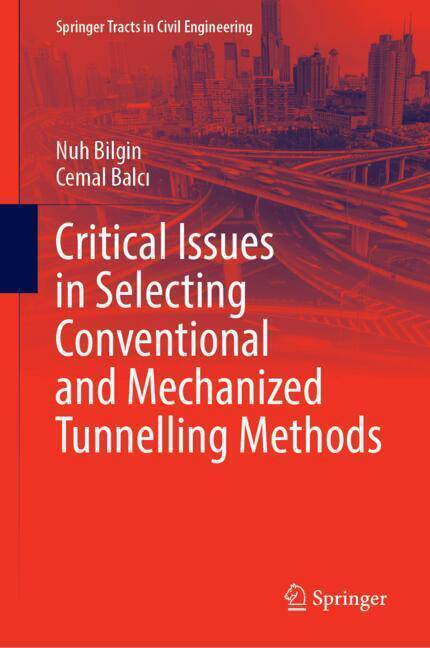
Je cadeautjes zeker op tijd in huis hebben voor de feestdagen? Kom langs in onze winkels en vind het perfecte geschenk!
- Afhalen na 1 uur in een winkel met voorraad
- Gratis thuislevering in België vanaf € 30
- Ruim aanbod met 7 miljoen producten
Je cadeautjes zeker op tijd in huis hebben voor de feestdagen? Kom langs in onze winkels en vind het perfecte geschenk!
- Afhalen na 1 uur in een winkel met voorraad
- Gratis thuislevering in België vanaf € 30
- Ruim aanbod met 7 miljoen producten
Zoeken
€ 152,95
+ 305 punten
Omschrijving
This book discusses the critical issues in selecting conventional and mechanized tunneling methods and lessons learned from the past. It covers the following main topics: geological and geotechnical parameters affecting tunneling methods, summarizing conventional tunneling and mechanized tunneling methods, the factors affecting the choice of tunneling methods such as the cost of the initial investment, the length of the tunnel, project scheduling, time for mobilization, emerging new technologies. Some examples of changing the tunneling method from conventional to mechanized tunneling or vice versa during the same ongoing project and hybrid tunneling methods in the same project are also given. The last chapter resumes the innovations made for the tunneling industry, summarizing advancements in safety, non-circular TBMs, robotics, new instrumentation, new materials and methodologies to decrease carbon footprint. This book is aimed at graduate students, professionals and researchers in tunneling, civil and mining engineering and geology.
Specificaties
Betrokkenen
- Auteur(s):
- Uitgeverij:
Inhoud
- Aantal bladzijden:
- 309
- Taal:
- Engels
- Reeks:
Eigenschappen
- Productcode (EAN):
- 9783031891137
- Verschijningsdatum:
- 4/05/2025
- Uitvoering:
- Hardcover
- Formaat:
- Genaaid
- Afmetingen:
- 160 mm x 229 mm
- Gewicht:
- 680 g

Alleen bij Standaard Boekhandel
+ 305 punten op je klantenkaart van Standaard Boekhandel
Beoordelingen
We publiceren alleen reviews die voldoen aan de voorwaarden voor reviews. Bekijk onze voorwaarden voor reviews.









